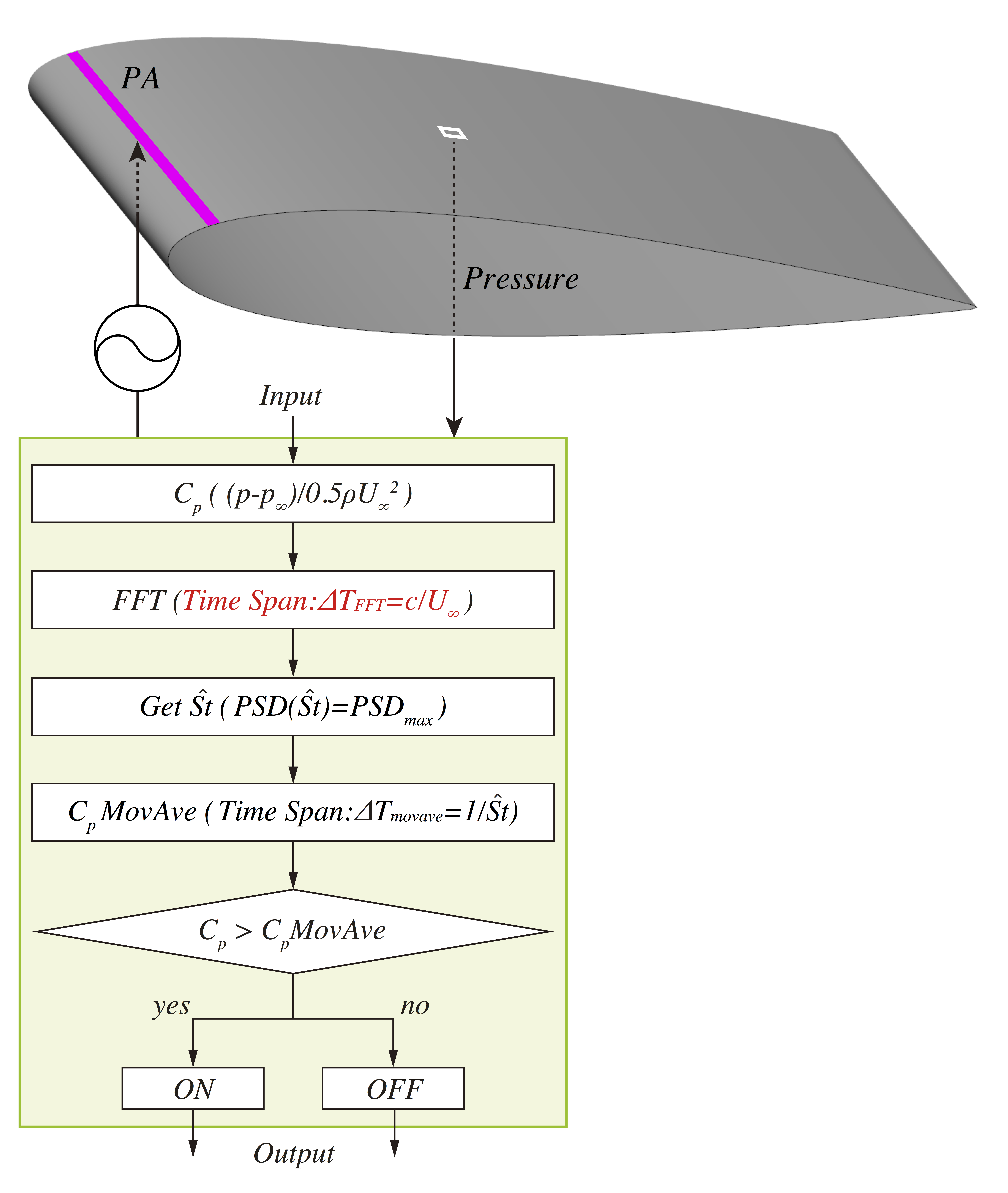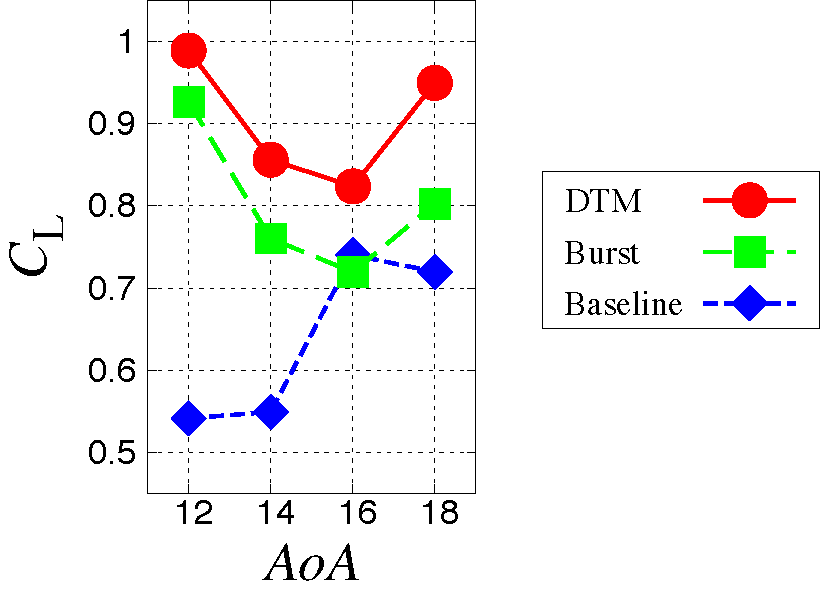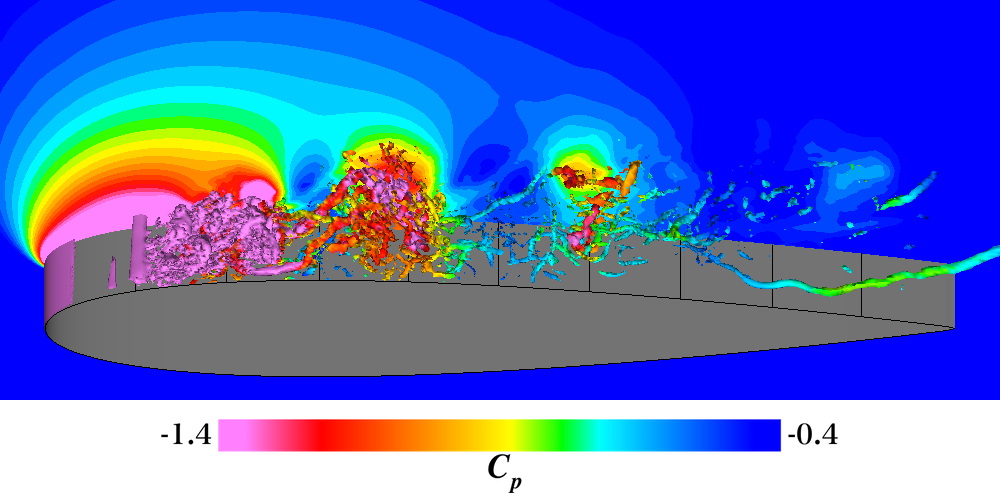Feedback Control of Flow Separation Using DBD Plasma Actuator
JAXA Supercomputer System Annual Report April 2018-March 2019
Report Number: R18EACA26
Subject Category: JSS2 Inter-University Research
- Responsible Representative: Kengo Asada, Tokyo University of Science, Department of Information and Computer Technology, Postdoctoral Researcher
- Contact Information: Kengo Asada(asada@rs.tus.ac.jp)
- Members: Kengo Asada, Takuto Ogawa
Abstract
The project develops flow control technic by using dielectric barrier discharge (DBD) plasma actuator to establish high efficient and robust vehicle systems such as rockets, aircrafts, and motor vehicles. We propose and demonstrate feedback control methods to adapt unsteady flows over the vehicles through a series of high-fidelity unsteady simulations.
Reference URL
N/A
Reasons for using JSS2
To conduct the large eddy simulations using the LANS3D as a computational solver.
Achievements of the Year
High-fidelity LESs of a NACA0015 airfoil flow controlled by a DBD plasma actuator were performed to verify the effectiveness of a feedback control model which we propose. The present feedback model (Fig. 1) drives the actuator located in the vicinity of the leading edge according to the passing of vortices above a pressure sensor (x/c = 40%) on the upper side of the airfoil. The passing of vortices is detected by abrupt pressure decrease compared to a moving-averaged pressure value. In the present model, the time range of moving average is unsteadily varied according to FFT analysis. We investigated the effectiveness of the feedback control model at AoA=12 deg last year. In addition to the AoA=12 deg, we performed the LESs of the flows at AoA=14, 16, and 18 deg this year. Figure 2 shows the lift coefficient CL at each angle of attack. The proposing control model case (DTM) shows greater CL value than the baseline case (Baseline) at each angle of attack. Additionally, the present control model achieves steady aerodynamic performance than the non-feedback control case (Burst). Figures 3 shows the vortex structures by iso-surface of Q-criterion colored by pressure coefficient at AoA=14 deg. The spanwise vortex structures pass along the airfoil surface. The plasma actuator is driven once when the spanwise vortex structure is passing above the pressure sensor, and the additional vortex structures are generated by actuation. These processes orderly arrange the vortices and contribute to keeping the steady aerodynamic performance.
Publications
– Non peer-reviewed papers
Ogawa, T., Asada, K., Sekimoto, S., Tatsukawa, T., and Fujii, K., “Feed-back Control of Stall Separation with DBD Plasma Actuator by Detecting Vortex Passing over an Airfoil,” AIAA Scitech 2018, Kissimmee, Florida, 2018. AIAA 2018-1059.
Usage of JSS2
Computational Information
- Process Parallelization Methods: MPI
- Thread Parallelization Methods: OpenMP
- Number of Processes: 79 – 84
- Elapsed Time per Case: 30 Hour(s)
Resources Used
Fraction of Usage in Total Resources*1(%): 0.28
Details
Please refer to System Configuration of JSS2 for the system configuration and major specifications of JSS2.
| System Name | Amount of Core Time(core x hours) | Fraction of Usage*2(%) |
|---|---|---|
| SORA-MA | 2,516,926.95 | 0.31 |
| SORA-PP | 0.00 | 0.00 |
| SORA-LM | 0.00 | 0.00 |
| SORA-TPP | 0.00 | 0.00 |
| File System Name | Storage Assigned(GiB) | Fraction of Usage*2(%) |
|---|---|---|
| /home | 52.45 | 0.05 |
| /data | 20,197.92 | 0.36 |
| /ltmp | 2,929.69 | 0.25 |
| Archiver Name | Storage Used(TiB) | Fraction of Usage*2(%) |
|---|---|---|
| J-SPACE | 0.00 | 0.00 |
*1: Fraction of Usage in Total Resources: Weighted average of three resource types (Computing, File System, and Archiver).
*2: Fraction of Usage:Percentage of usage relative to each resource used in one year.
JAXA Supercomputer System Annual Report April 2018-March 2019





